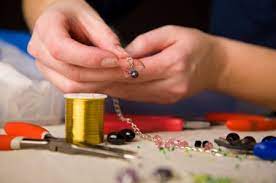Jewelry has always been a powerful means of communication, Jewelry repair allowing individuals to express their emotions, beliefs, and affiliations. Rings, for example, have been used for centuries to symbolize love and commitment, with engagement and wedding rings holding particular significance. Religious symbols, such as the cross or the Star of David, are commonly incorporated into jewelry to signify faith and spirituality.
Beyond symbolism, jewelry often carries sentimental value. Heirloom pieces passed down through generations become tangible links to the past, preserving family history and traditions. Lockets, for instance, have been cherished for their ability to hold photographs or other mementos close to the wearer’s heart.
The Contemporary Landscape
In the 21st century, the world of jewelry continues to evolve, embracing a wide range of styles and materials. While traditional materials like gold, silver, and gemstones remain popular, contemporary designers explore innovative materials such as recycled metals, sustainable gems, and alternative stones.
Customization has become a growing trend, allowing individuals to create personalized pieces that reflect their unique tastes and stories. With advancements in technology, 3D printing and computer-aided design have opened up new possibilities for intricate and customized jewelry.
Conclusion
Jewelry stands as a testament to human creativity, craftsmanship, and the enduring desire to adorn oneself with beauty. From ancient civilizations to modern times, the allure of jewelry transcends mere fashion trends, becoming a symbol of identity, culture, and personal expression. As we continue to navigate the ever-changing landscape of the jewelry world, one thing remains constant – the timeless beauty and significance that jewelry brings to the human experience.


